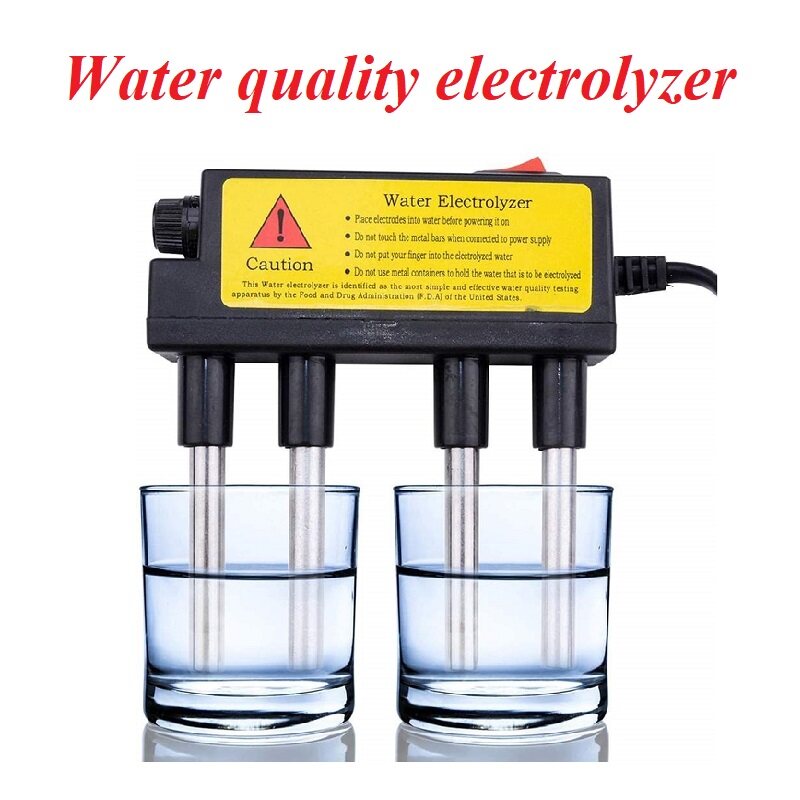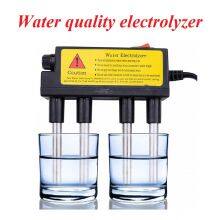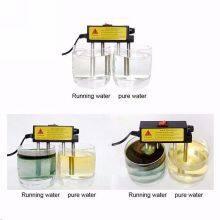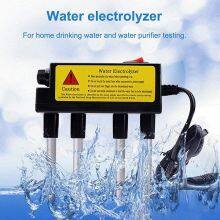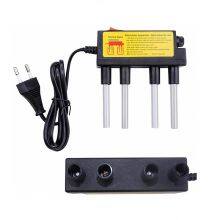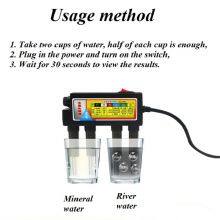Water quality analysis electrolyzer
Model: 10A
Testing item: Heavy metals
Type: Water Quality Rapid Analyzer
Measurement range: 0~9999
Measurement accuracy: 0.1
Power supply voltage: 220V
Resolution: 80%
working principle:
This instrument has electrolytic rods with positive and negative poles (one is an iron rod and the other is an aluminum rod), which serve as two electrodes for introducing an electric field. After the electrolyzer is powered on, positive valence Fe3+ions dissolve under the action of current, and they will combine with negative valence OH - ions in water to form insoluble Fe (OH) 3 particles. These particles have strong coagulation and adsorption activity for colloidal particles in water, and thus form adsorption and coagulation processes for organic or inorganic substances in water.
At the same time, due to the action of electric current, metal particles that were originally dissolved in water, such as manganese, potassium, cobalt, etc., are reduced and gradually aggregate to form metal clusters. Due to the different color developments of different metal ions, color separation occurs.
The water after electrolysis appears in different colors, displaying various impurities in the water:
Yellow: Dissolves acids, silicon compounds, organic minerals, molybdenum, silicon, fluorides, and other organic compounds,
Green: arsenic (arsenic), mercury, lead, copper, sodium,
Blue: bacteria, viruses, carcinogens, organic phosphorus, etc. (fertilizers, detergents, and pesticides),
Red: Iron and rust, bacteria,
White: lead, zinc, mercury, inorganic salt dirt,
Black: Heavy metals (zinc, lead, copper, chromium, manganese, cadmium).
Usage method
1. Take two cups of water, half of each cup is enough,
2. Plug in the power and turn on the switch,
3. Wait for 30 seconds to check the color change of the water and make a preliminary judgment on the water quality based on the color change in the water.
The standard for measuring the quality of water
1. Does not contain any harmful or odorous substances to the human body (especially heavy metals and organic compounds);
2. The softness and hardness of water are moderate, usually ranging from 50-200mg/L (calculated as calcium carbonate);
3. The pH value is weakly alkaline (7.0-8.0);
4. The content and proportion of trace elements and minerals in the water are moderate, similar to normal liquids;
5. Moderate levels of dissolved oxygen and carbon dioxide in water (dissolved oxygen in water ≥ 6-7 mg/L)
6. The nutritional and physiological functions of water are strong, including solubility, permeability, diffusion, metabolism, emulsification, and cleaning power.

Send Inquiry to This Supplier
You May Also Like
-
Density Meter Porosity TesterUS$ 1180 - 1200MOQ: 1 Piece
-
Porosity MeterUS$ 1180 - 1200MOQ: 1 Piece
-
DensitometerUS$ 1180 - 1200MOQ: 1 Piece
-
Peanut (without Shell) White Skin and Red SkinUS$ 1.7 - 2.35MOQ: 500 Kilograms
-
Electronic Sphygmomanometer Wrist Digital Sphygmomanometer Rechargeable / Dry Battery Two ModelsUS$ 8.5 - 9MOQ: 100 Pieces
-
Industrial Object Thermometer/Industrial ThermometerUS$ 23.5 - 23.5MOQ: 10 Pieces
-
Laser Range FinderUS$ 13.5 - 32MOQ: 100 Pieces
-
MultimeterUS$ 8 - 67MOQ: 100 Pieces
-
Laboratory Electronic Balance Series ProductsUS$ 185 - 1750MOQ: 5 Pieces
-
BalanceUS$ 185 - 1750MOQ: 5 Pieces


